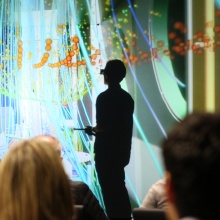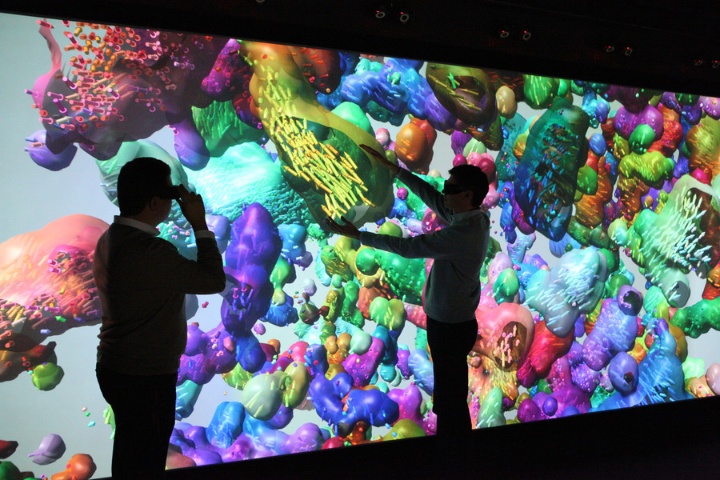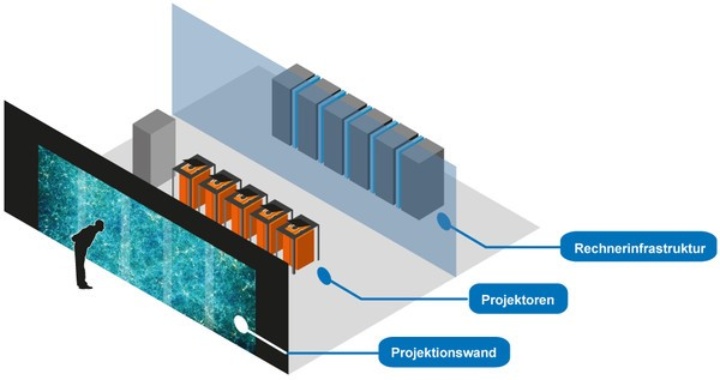A core part of the VISUS building is the 44-megapixel rear-projection system in a dedicated visualization laboratory. On a screen of 6 meters in width and 2.25 meters in height high resolution imagery can be viewed in 2D or stereoscopically in 3D. The installation is unique in Europe with its pixel size of only 0.56 mm.
Until now similar powerwalls are often built using a huge number of standard projectors and are able to display between two and ten million pixels. Therefore, a single pixel is usually significantly larger than on a conventional desktop monitor. This low resolution restricts the field of application. Especially interactive applications require a high resolution, for example for several viewers standing close to the wall and analyzing complex, detailed information or even texts.
The scientists at VISUS are working with 4K projectors that are usually used in cinemas. Ten of these projectors are installed upright in pairs side by side forming five projection columns. The powerwall is used to visualize complex data from different areas of science and engineering.
The image is projected from the back on a laminated glass screen. It has dimensions of about 6 × 2.25 meters. The size of a single pixel is about 0.55 mm, which allows for discerning fine details and reading text. The pixel size is roughly the same as on a standard desktop monitor. The system shows a total of 44 million pixels for each eye.
Channel separation for stereoscopic display is done using INFITEC. This method uses interference filters and can be considered an advanced version of the widely known red-cyan glasses. The glasses allow only specific and for each eye different wavelength to pass. The one of the other eye are blocked. As the parts visible for each eye are spread over the whole color spectrum users can see almost normal colors compared to the simple red-cyan glasses. An advantage of INFITEC channel separation - and active shutters for time multiplexing - over systems using linear polarization is that the user can move his head freely.
The projection system consists of ten JVC DLA SH4K projectors originally developed for use in cinemas. Each of the projectors is capable to display images with a resolution of 4,096 x 2,400 pixels.
The devices are installed in portrait mode in order to minimize the number of overlapping areas. Every two projectors form a stereo pair projecting on the same area. The image therefore consists of five columns with four blending areas resulting in a total resolution of 10,800 x 2,400 pixels.
Each of the projectors requires input from four graphics cards. A set of ten dedicated display nodes consisting of ten machines with two graphics processors each is used to provide this input. A single machine therefore can drive one projector.
As the intended use of the projection system is interactive computer graphics and visualization with at least 30 frames per second, more compute power is required to render complex scenes that the display nodes can provide. Additional 64 rendering nodes are used for that. Each of these prepares a small part of the image which is then delivered via a high speed interconnect to the display nodes.




